August 7, 2016
Martha O'Kennon
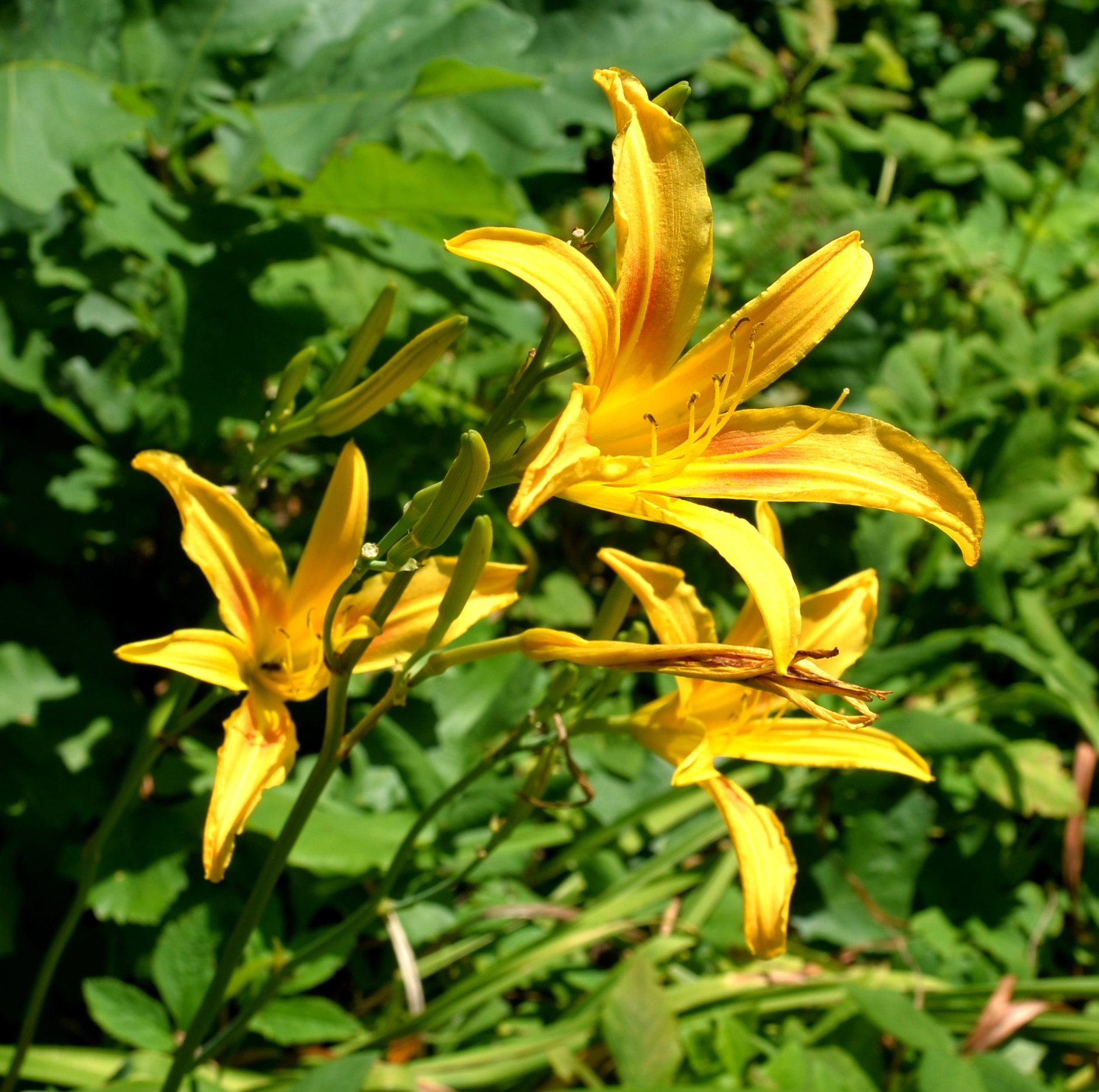
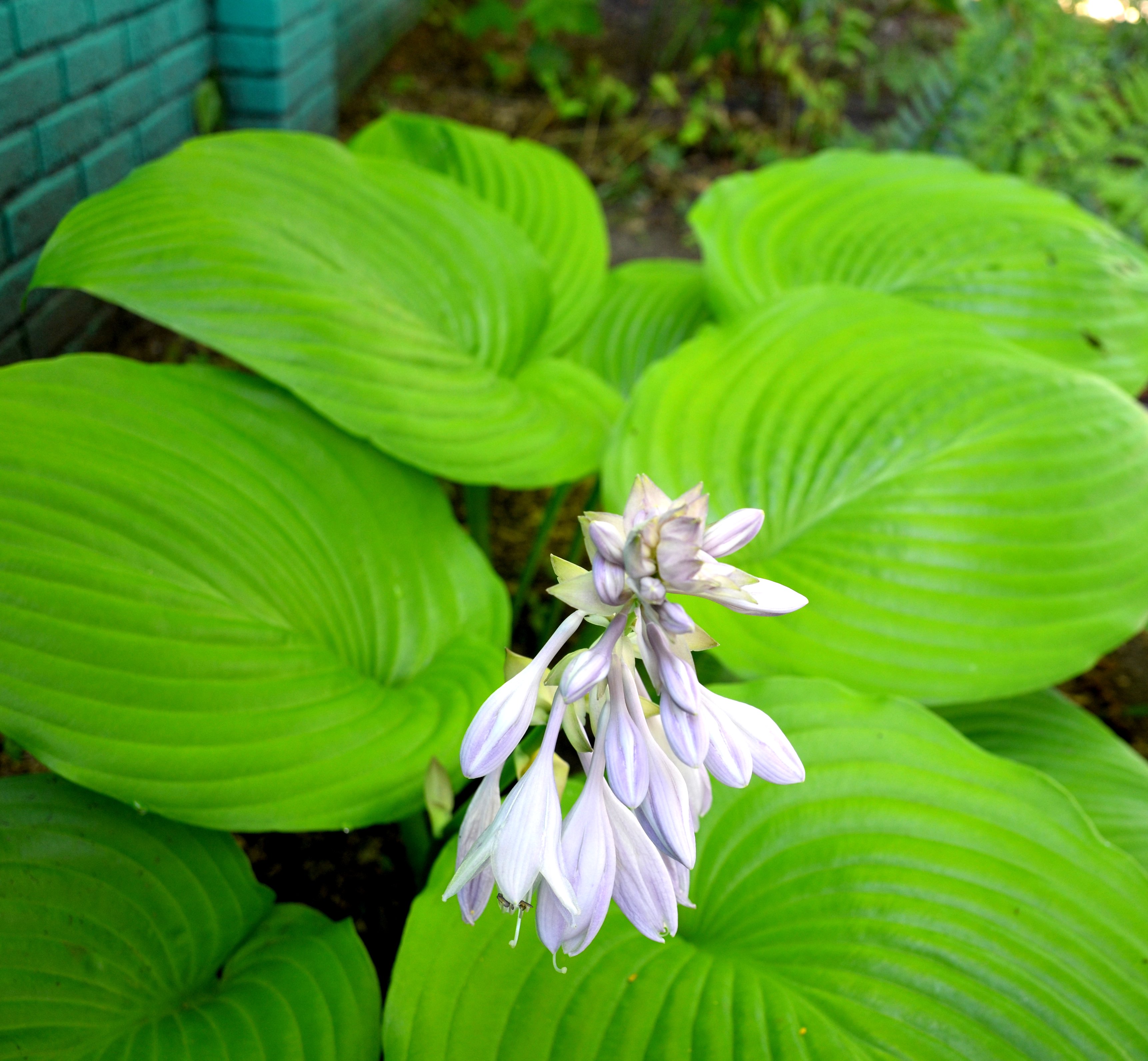
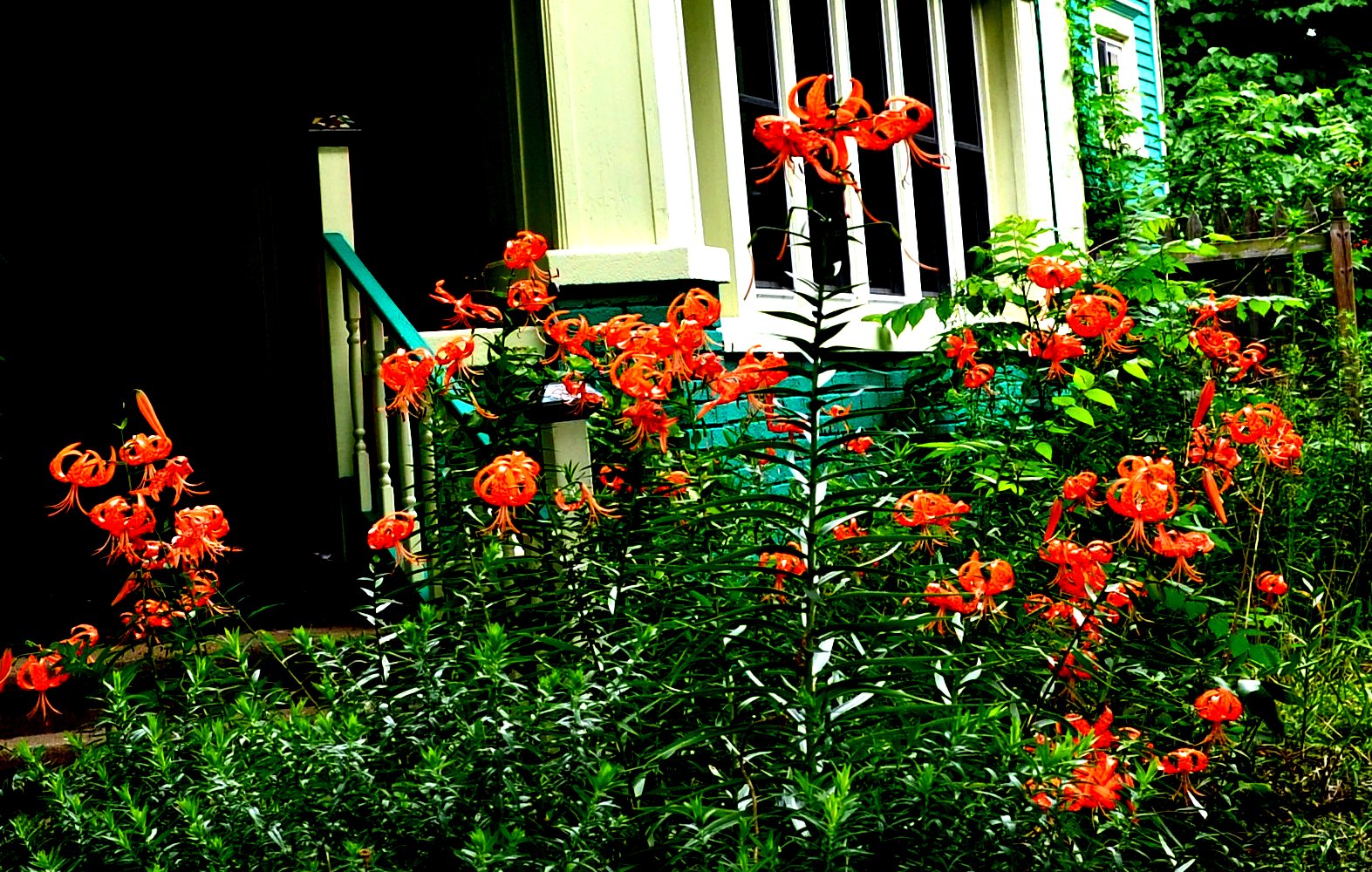
The energizer bunny (metaphor for the heat wave) still keeps on going. Luckily today my task is to stay indoors and try to edit tomorrow's blog. Above: August Orange is a daylily that blooms (as its name implies) most of August. The tiger lilies were spectacular for about a week and a half. You'll see more of them with little bees turning red from their pollen. Fortunately most of my hostas are in the front garden which so rarely gets any sun, and that's what they like - the shadier the better!
Remember that there is information in the name of the file for each image. You can see it by mousing over the image - look at the lower left of the screen.
I would try clicking on the image. If the little "+" sign appears, it means you can enlarge again. While it is in "+" mode, click on something you want to see more clearly and it will zoom to that section. Then the info is displayed in the address line above. If the image has been cropped
so that clicking on it doesn't result in a larger picture, you can always hit control-plus to increase the size of the image.
Sort of a rarity, a tiny ant stops and lets me photograph it. I seem to recall it was on a Norway maple leaf. The next image is of a tiny grey bee that is only a bit larger than the ant. Here is a tiger lily, whose anthers are dark red with pollen, and two kinds of bees gathering a goodly amount of red pollen on their otherwise shiny bodies. The one on the right is the little green sweat bee (as opposed to the larger green sweat bee of course).
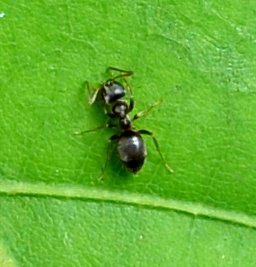
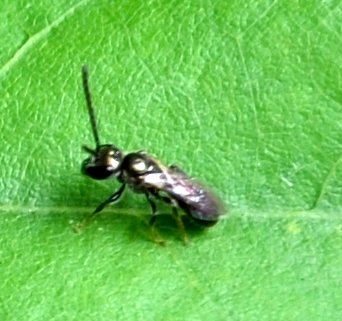
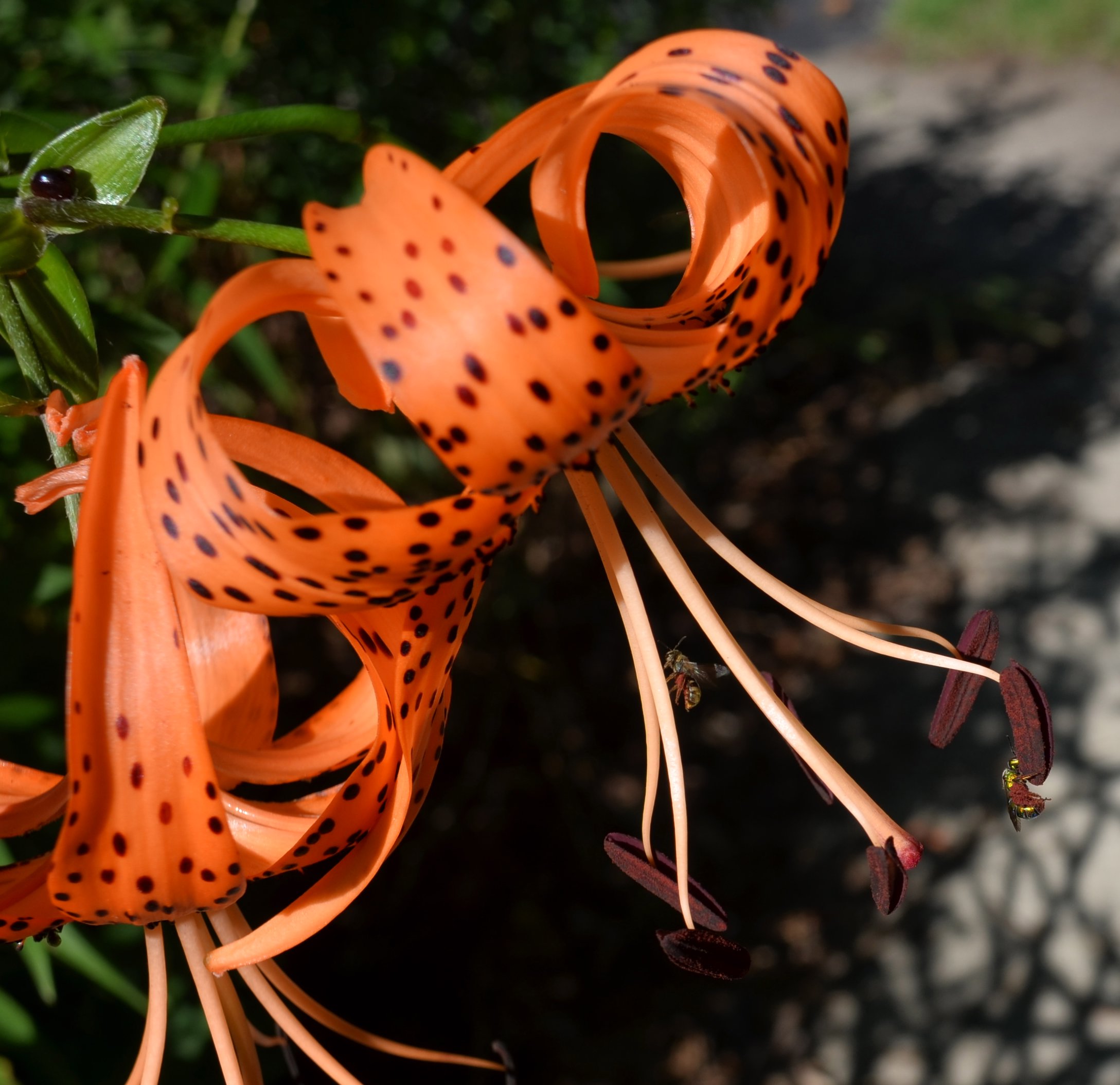
There were few new beetles. Here is a weevil I found just after dark - it looked gold-studded to me, but that was just an artifact of the lack of focus and the camera' little light making everything yellower than it should look. It turns out to be a Black Vine Weevil like this second image, which I took in the daytime last summer. The last one is a Checkered Beetle, Phyllobaenus pallipennis.
, very long first antennomere. Possibly Genus Otiorhynchus 8 3 16 1a.jpg)
 6 21 15 2ab.jpg)
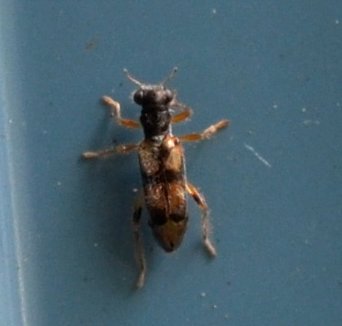
This is what most of us think of as the Asian Lady Beetle, although there are many other colors and number of spots that also classify as Multicolored Asian Lady Beetle. This is the Swamp Milkweed Beetle, found on my neighbors' swamp milkweed. By the way, speaking of milkweed, there is one tiny milkweed plant coming up this very week out where I scattered many many pods worth of seeds last fall. I'll show you a picture of it next week.
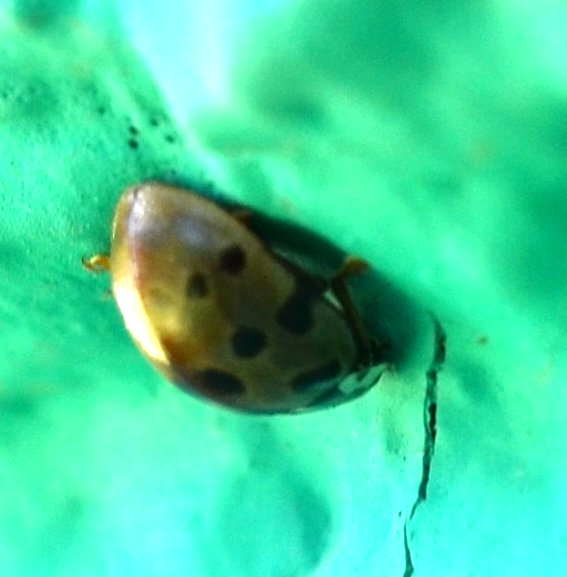

Remember the tiny baby assassin bug you saw last week? Here is a slightly larger version with a good-sized prey for its size. And that little bluish lace bug.

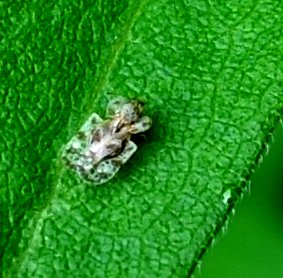
I don't know if it is just the heat, but I've been finding many fewer types of leafhoppers this week. Or maybe it is just a lull until the new species cycle in. The first one is an old one of a Meadow Spittlebug, the second the nymph with the curly tail of Jikradia olitoria, and the third the adult of number 2. (I think the nymph is much more advanced than what we've been seeing. Here you can see its spiky leaping legs.)

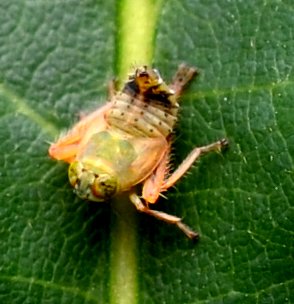
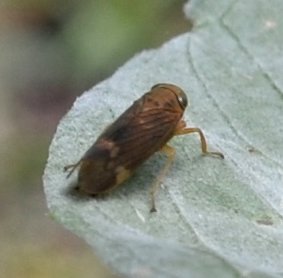
The stink bugs are starting to really hatch. The other day I saw at least a half-dozen of the little reddish ones on the shop siding. There was also a longer, larger kind that wouldn't let me get a dorsal view, only side views. The black critter with white edges isn't a Stink Bug, but is the White-margined Burrowing Bug.
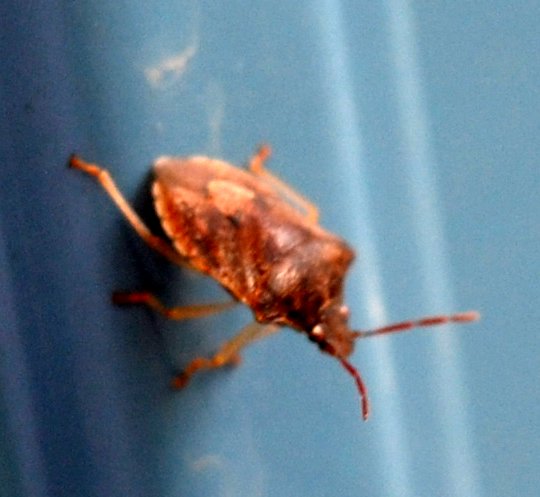
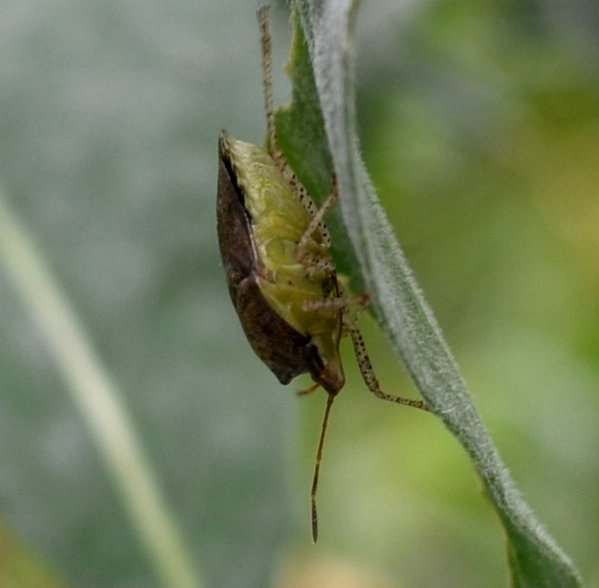
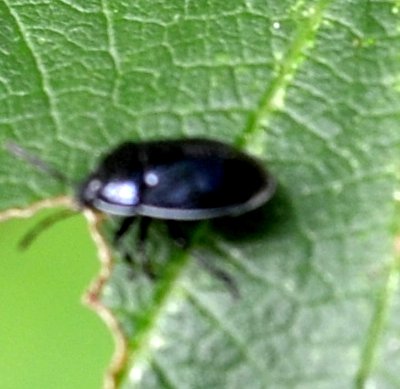
The only treehopper that stood out this week was, yet again, the green buffalo treehopper. But this week we also got to see yet another kind of planthopper, this white one, the Northern Flatid Planthopper, Flatormenis proxima.
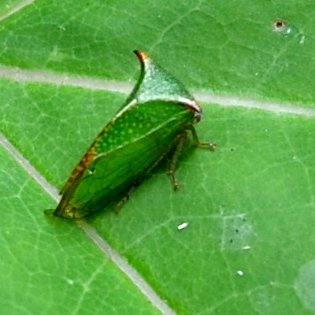

Finally we have actually seen a Tiger Swallowtail Butterfly. This one came to the Tiger Lilies (what else did you expect?) and stayed at least fifteen minutes and let me get several views. It had had some damage to its tails but was beautiful! The second image shows it flapping its wings. Later (last picture) it was joined by (perhaps) a potential mate, a perfect specimen. All this action took place a bit before and after lunch...
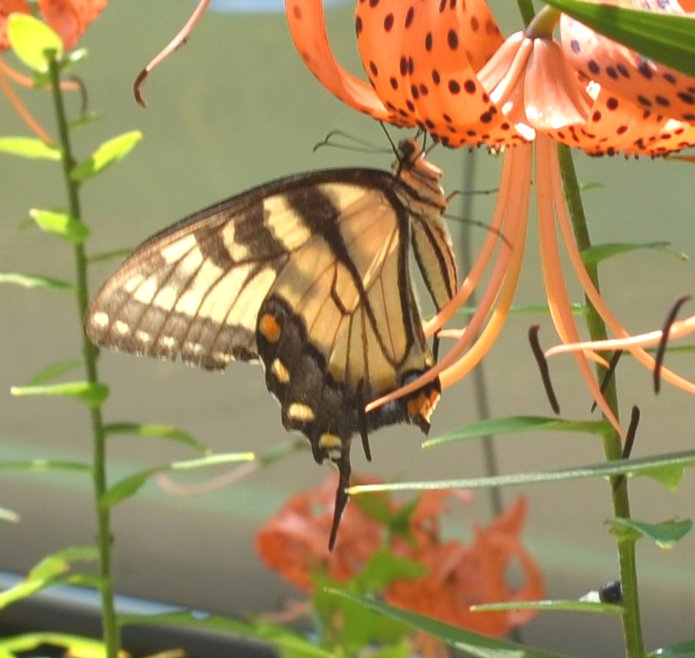
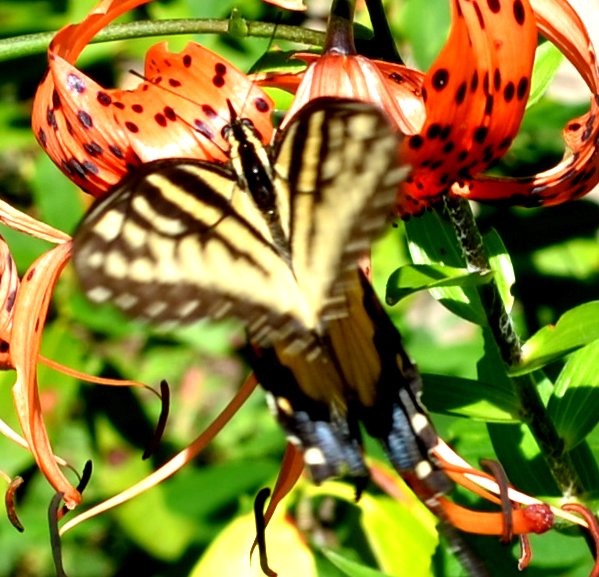

Oh my, what is this large sleepy creature? It's one of the feral cats who spends a lot of her time in the yard. It's shady, it has a water source, and there must be a colony of little mammals somewhere. (It also must spend some of its eating time at the colony up the street a bit. One of my neighbors feeds about a dozen wild kitties every day.) Here's one of the Autumn Meadowhawks, a male this time. Oh look! Behind the dragonfly there is a the head of a man with a big nose and sad eyes wearing an old floppy hat! Here's also one of those little squatting flies with its gorgeous orange eyes, the smoky-winged Woodlouse Fly.
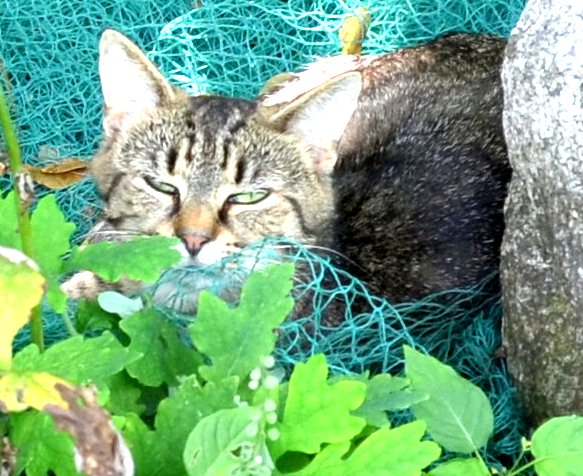
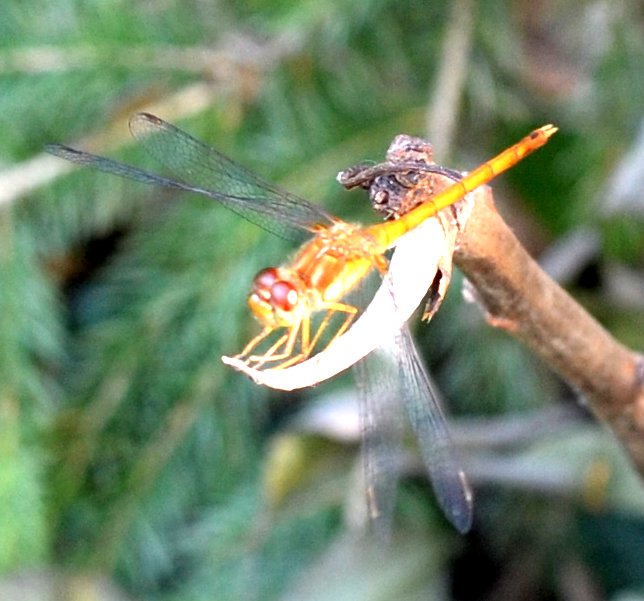
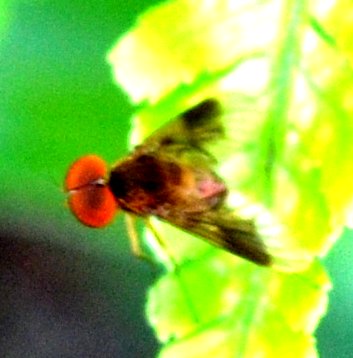
Soon we'll be seeing more of a collection of hoverflies, but here's one (Toxomerus geminatus) that we've seen since late spring. What an intricately decorated thing! The robberfly isn't easy to identify from the back, because you (well, I) always look for its robberish posture. And, finally, a copper-colored long-legged fly;

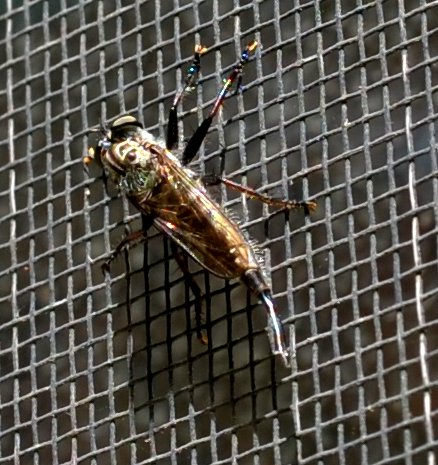

Here are a stocky visitor [fly], a scorpion fly with its tail rolled up like its namesake, and a mosquito full from a blood meal digesting it in a Japanese anemone. Click twice to magnify the mosquito. (It is NOT a Zika mosquito.)

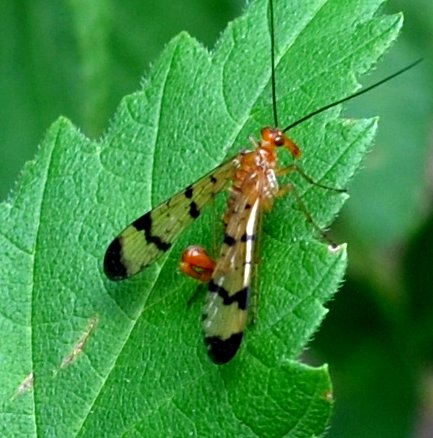
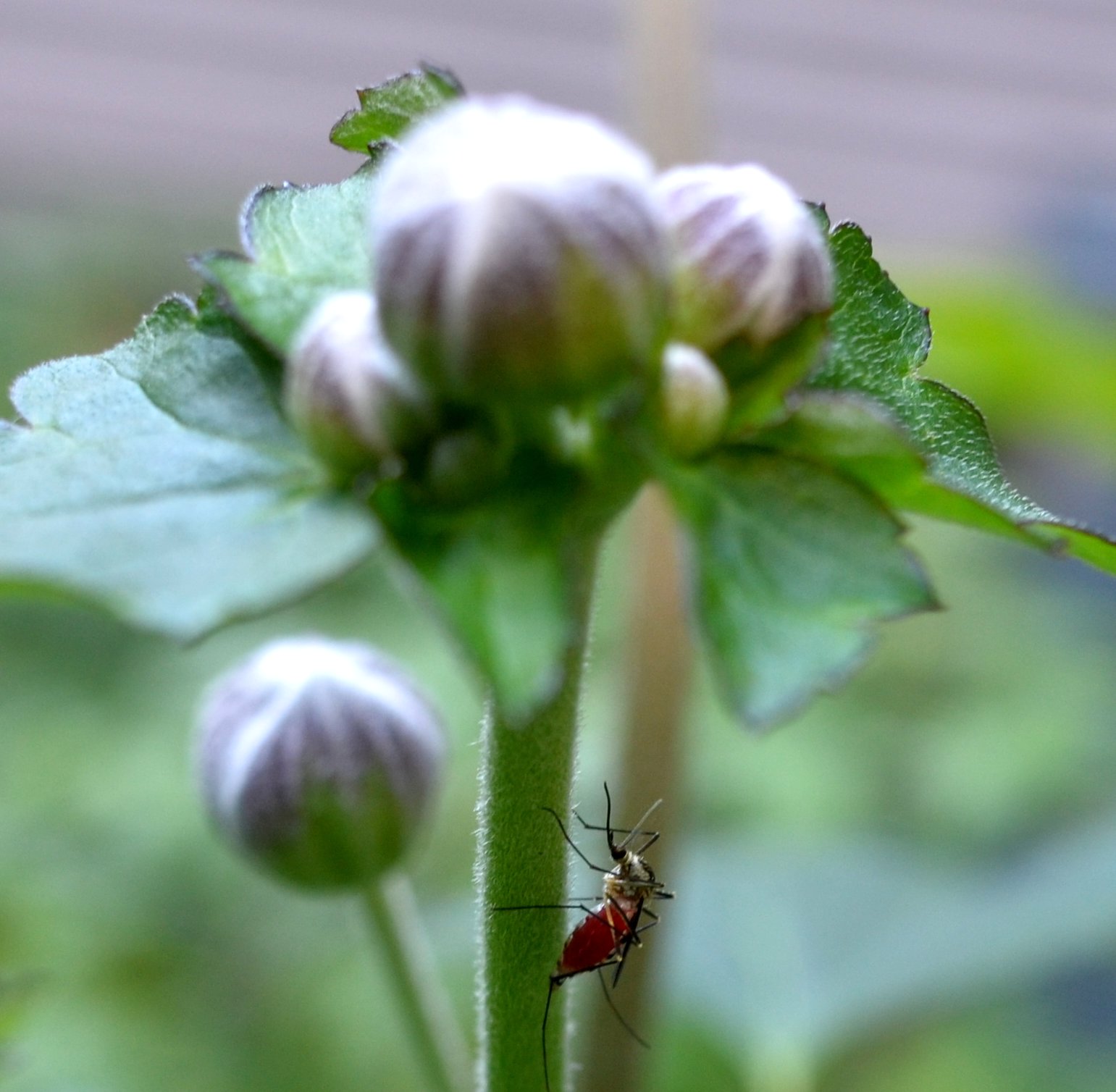
It's my break time, and I want to go out and see the flowers again. First is a hardy Astilbe, given to me by Betty Beese years ago. Next - here's the real August Orange. It really is such a deep gold you might as well name it orange! And last, a Rose of Sharon from my neighbors' yard. I wonder what are those little pointy bugs in the middle of the flower?
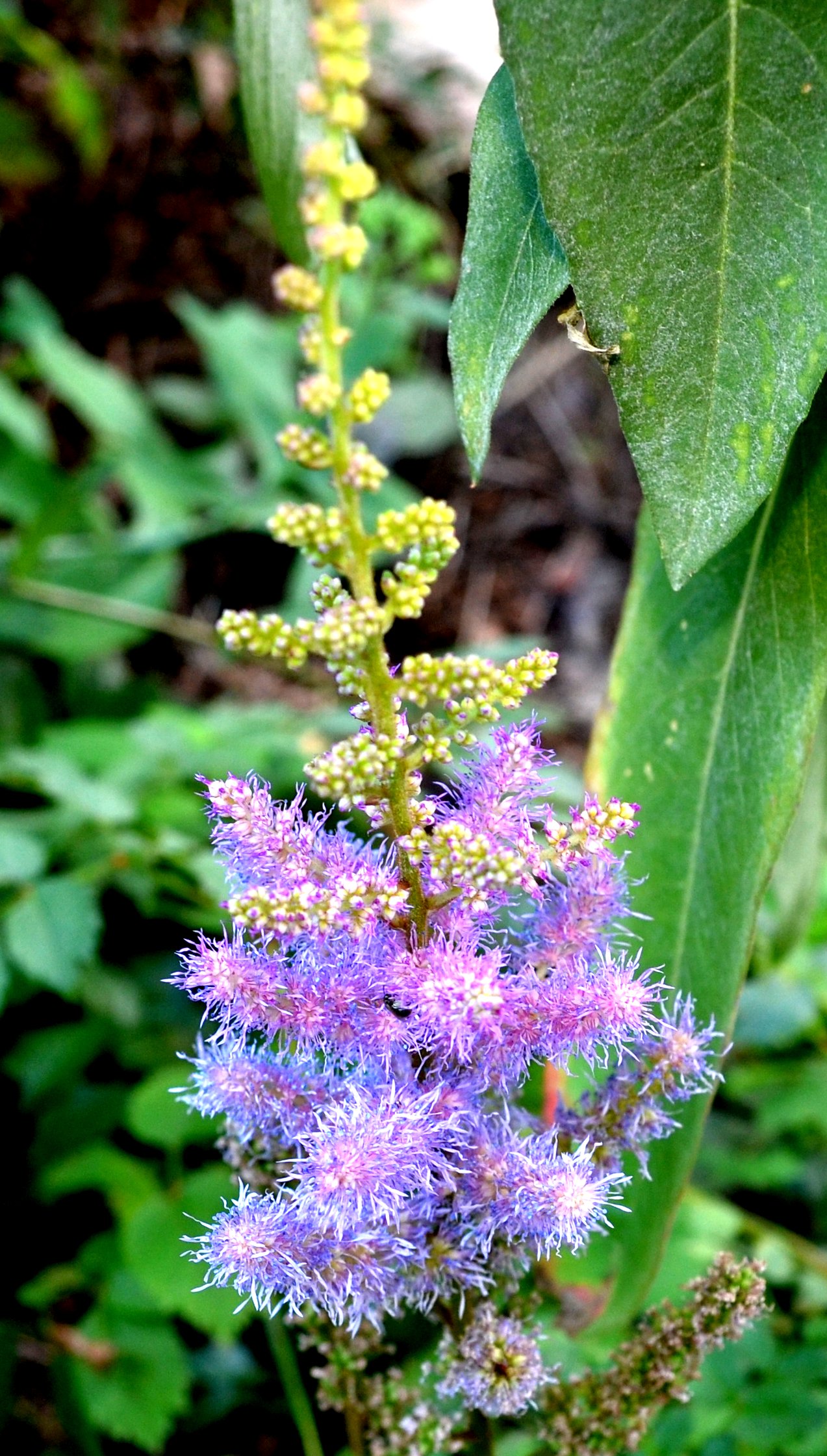
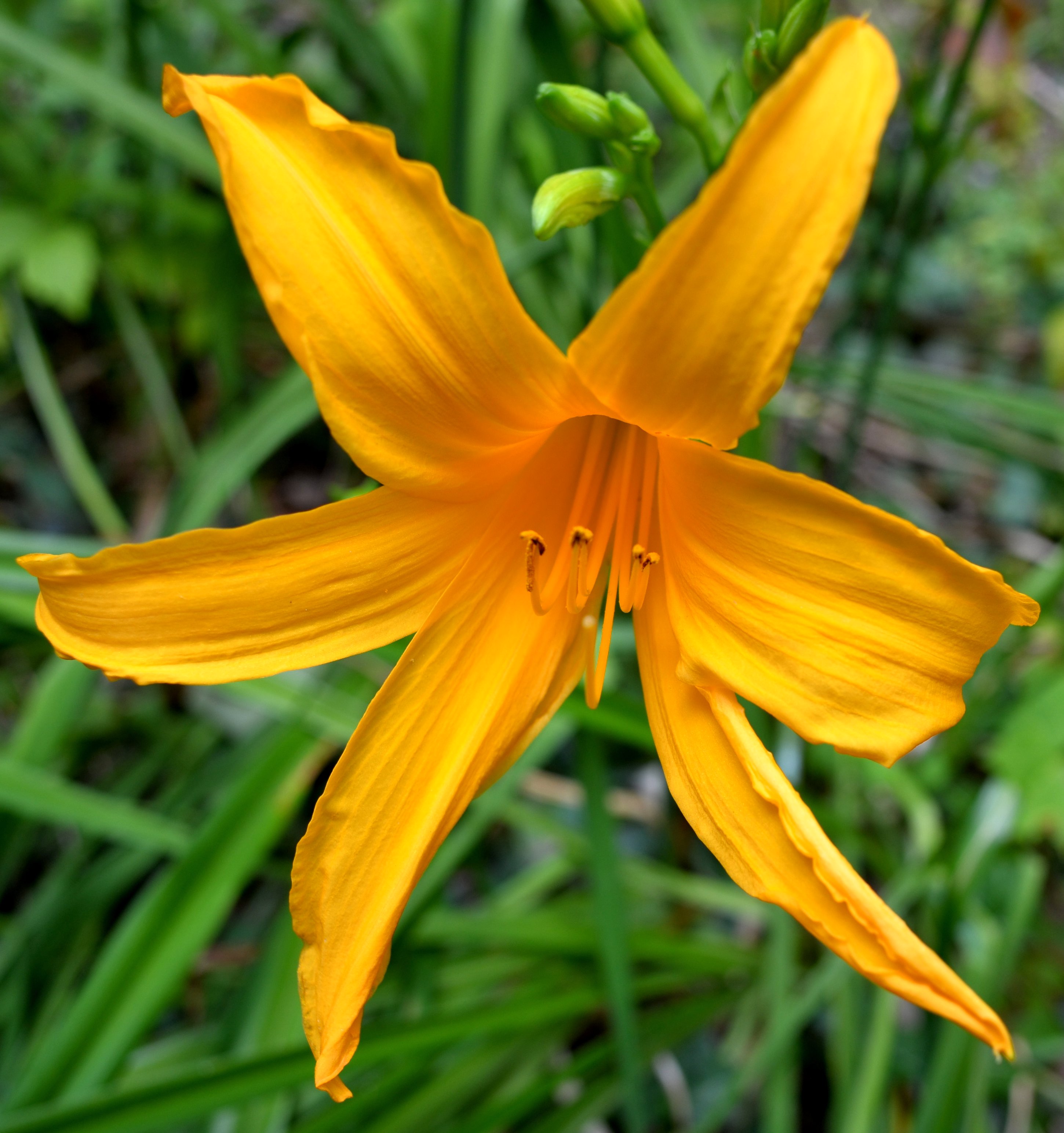
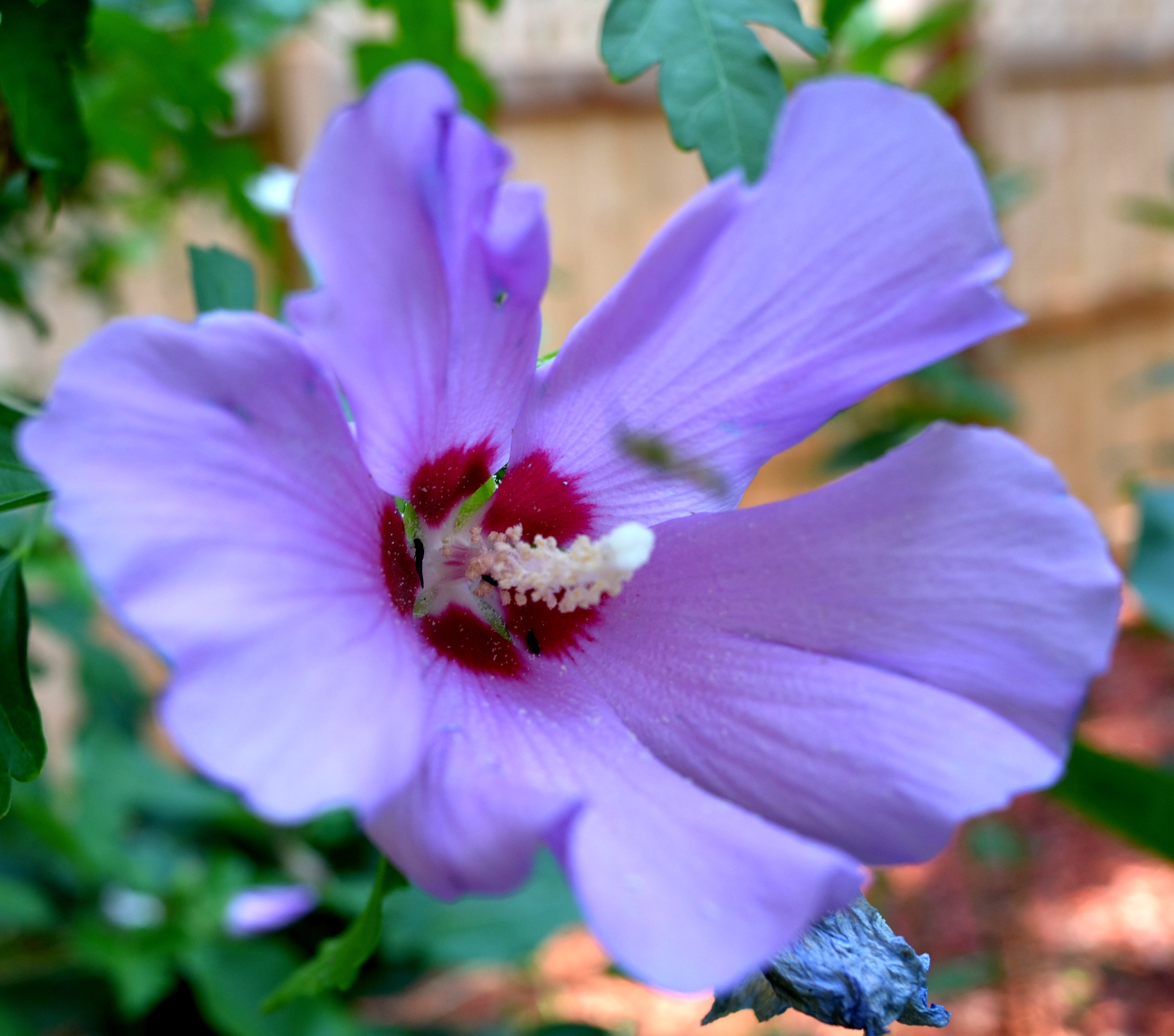
Gosh, I forgot to add these little frogs between dragonflies and flies, but here they are. I have spotted at least once a day baby Grey Tree Frogs, some of them only a bit longer than a centimeter.



Here are some more Harvestmen. I'm really starting to admire them more and more.
:
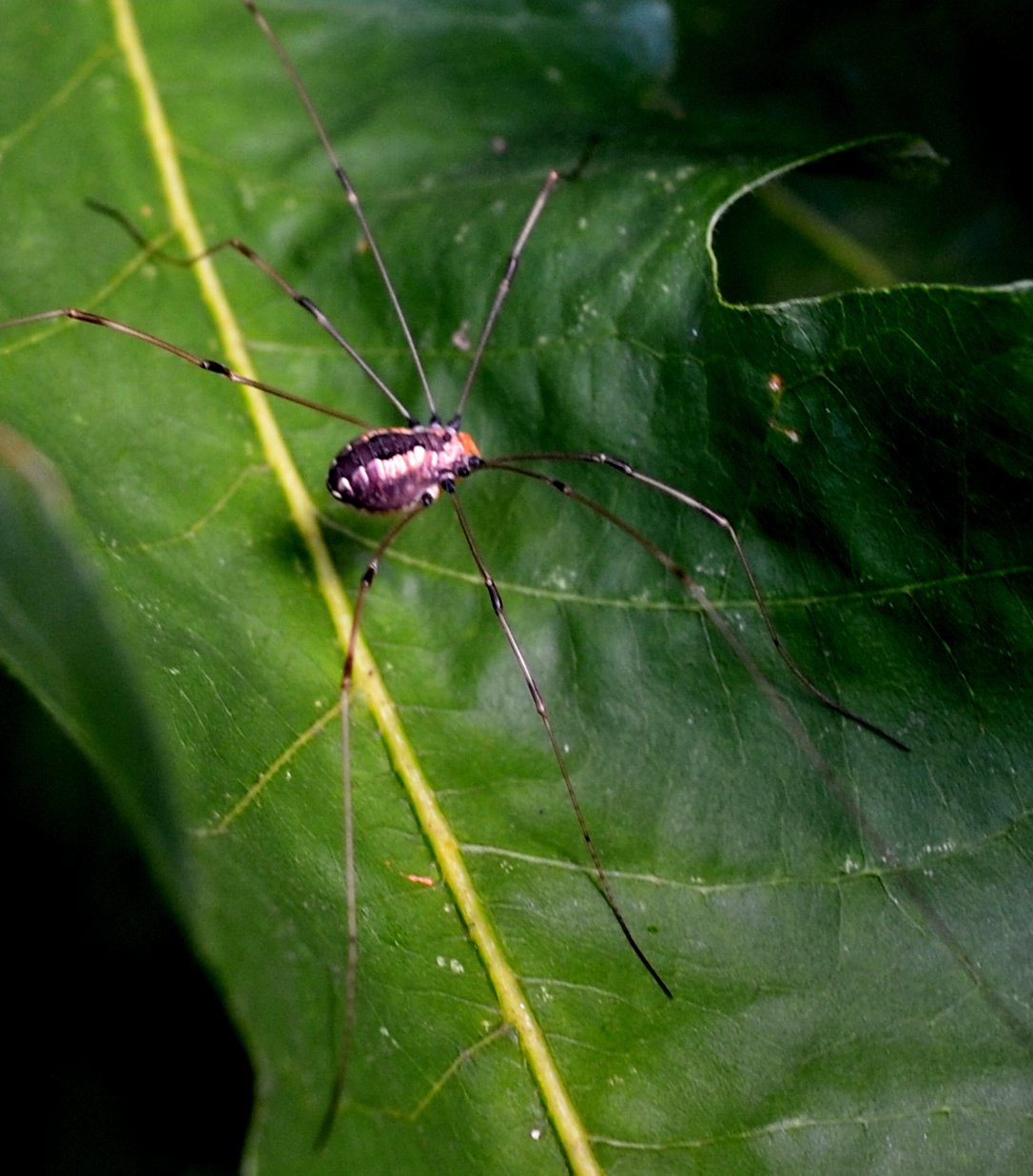
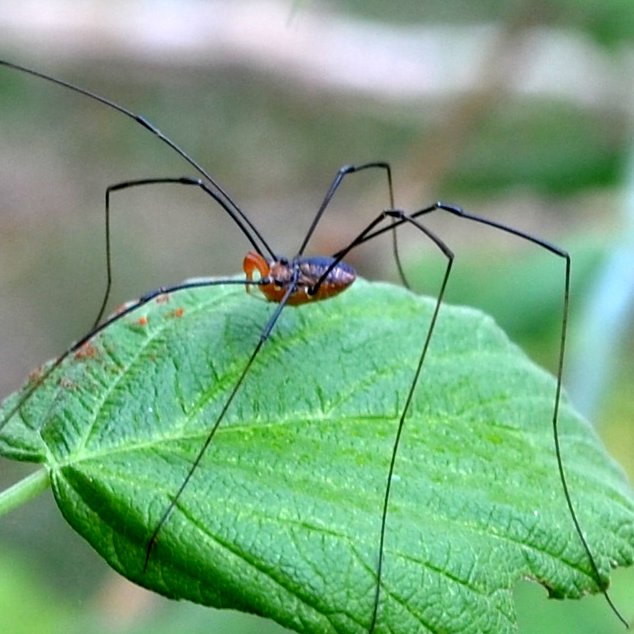
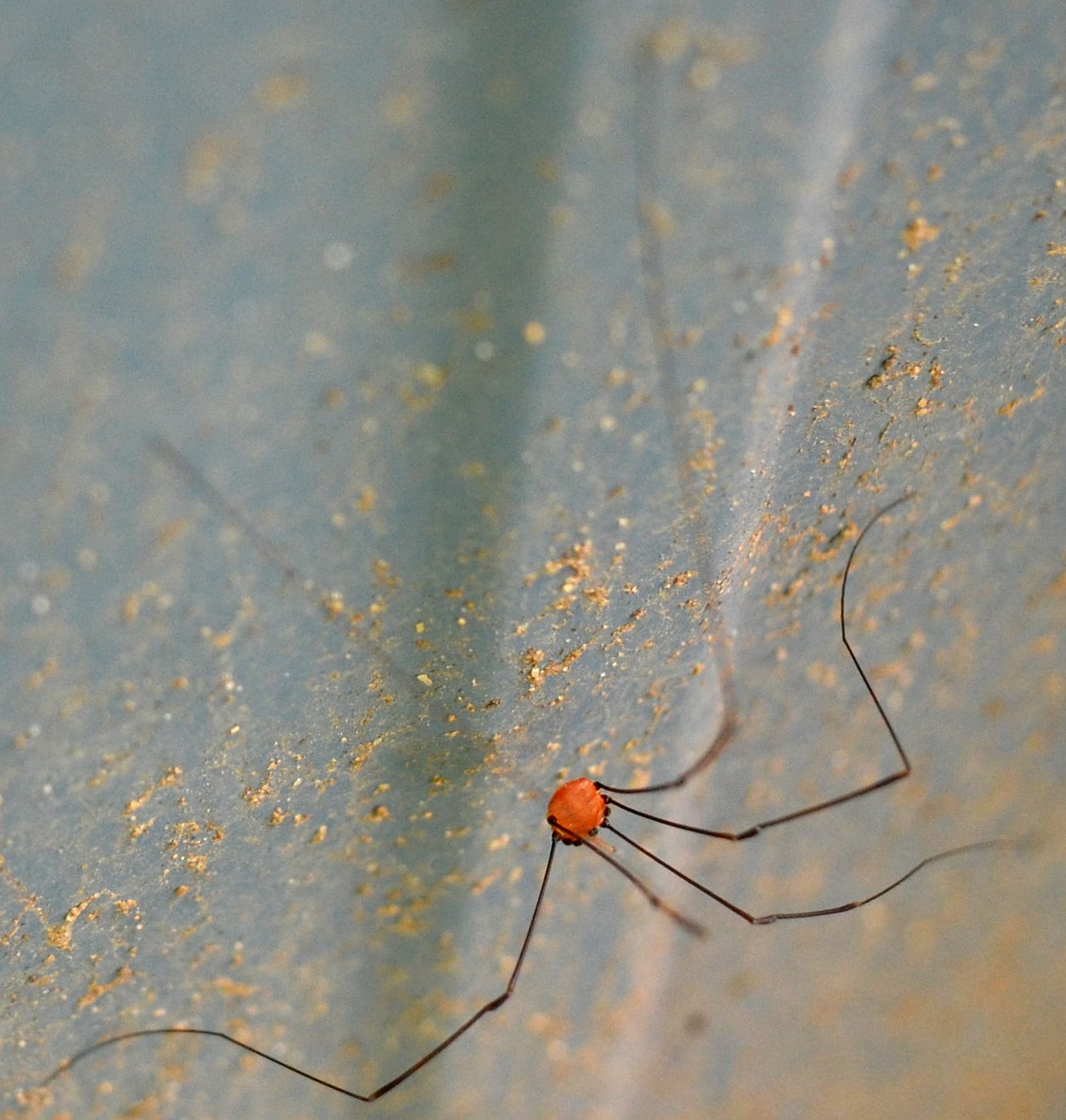
Here are a few ichneumons - I don't remember seeing this first one before, though I do seem to recall the next two.
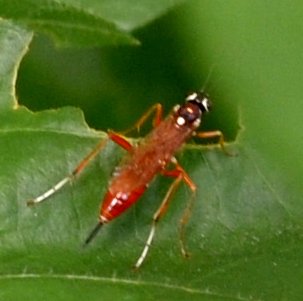
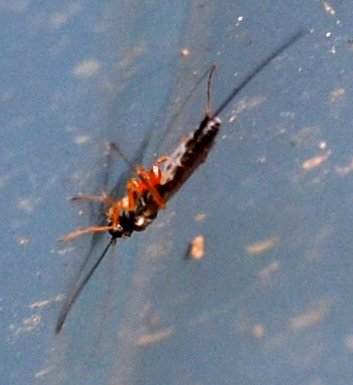

I've seen green lacewings though mostly on the wing. But here is a larva, and this rubber ball is the egg mass of one of the Spiders.
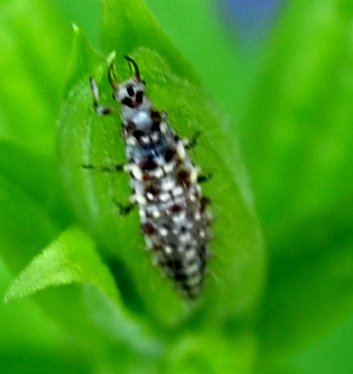

This tiny larva does look a lot like the caterpillar of the Hickory Tussock Moth (second picture). The third image looks like one of the Gypsy-type caterpillars.
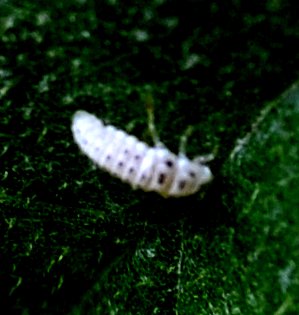


Here are some moths that didn't fly right away when they saw me coming. I don't recognize any of them, though the one that looks like a propped-up twig may be a leaf miner moth.

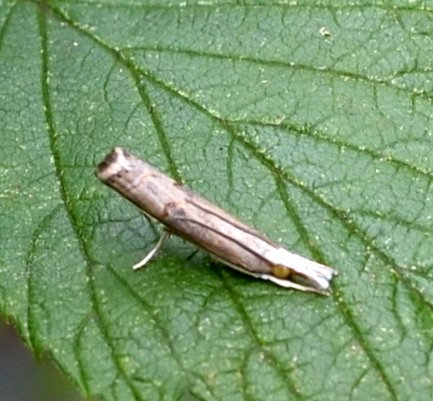
Let's check out the week's spiders. Of course the most common was the common house spider. The little tiny crab spiders are starting to populate the asters, possibly looking forward to the day the asters bloom and attract goodies to the spiders. Whatever that bug is, it should look up at the shape of an unknown spider seen through a leaf.
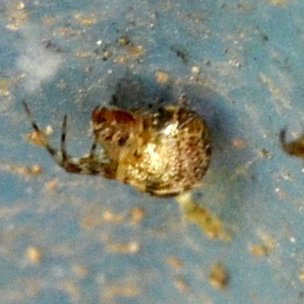
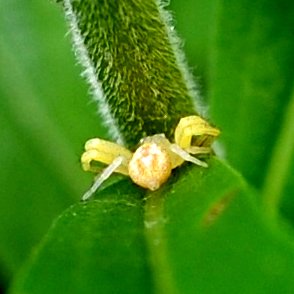
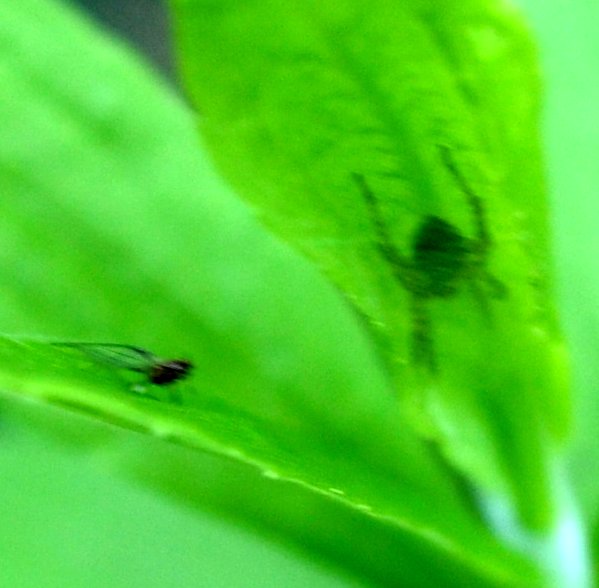
This largish spider was hanging from a doortop. This Cross Orbweaver in an aster is one of several I've seen lately. This other one was hanging from a web near where I put one out of the house a couple of weeks ago.
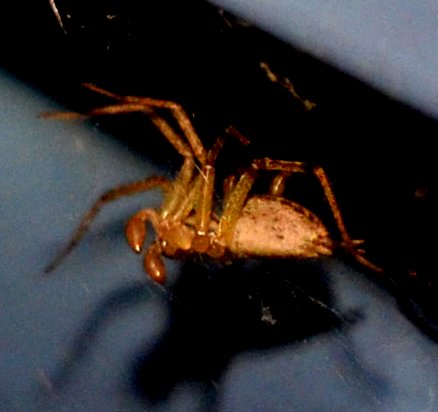

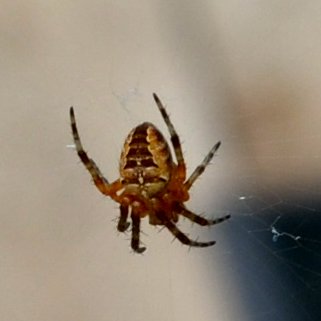
Just as the trumpetvines are beginning to drop their flowers, some of the yellowjackets and other wasps are coming back carefully. The Bee Wolf was a visitor last year, and it's a good thing I worked and worked to identify it - this year was much easier! Later I saw I had a new kind of face represented, and it turned out that the face in picture 2 is that of a female. Also today this black mystery wasp came over and over to the trumpets. The fact that it is holding its wings at a right angle from each other says it is a Grass-carrying Wasp.
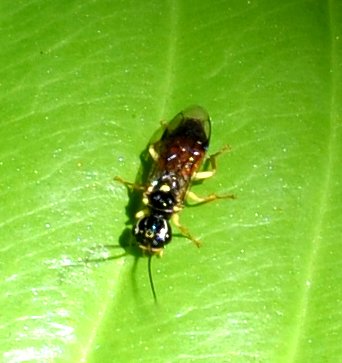

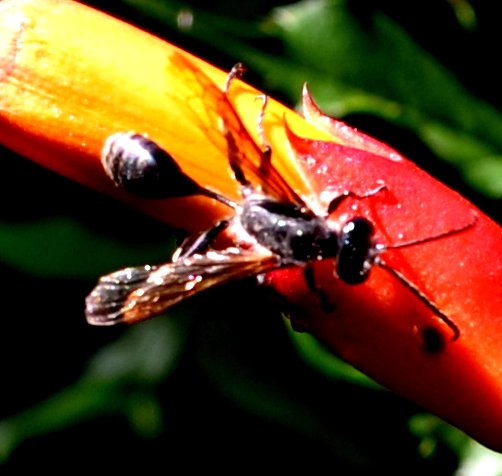
This week I saw my first male European paper wasp of the year. I was tipped off by the 7-segmented abdomen - a rule for sexing wasps. 7 segments - male; 6 segments - female. Another tip: The male's antennae are slightly curly at the ends. A third dead giveaway for males is this shield-shaped face decoration. Image number 3: Another male European paper wasp: the brown creeping into the yellow of the abdomen of this wasp makes me think it is due to some infection....
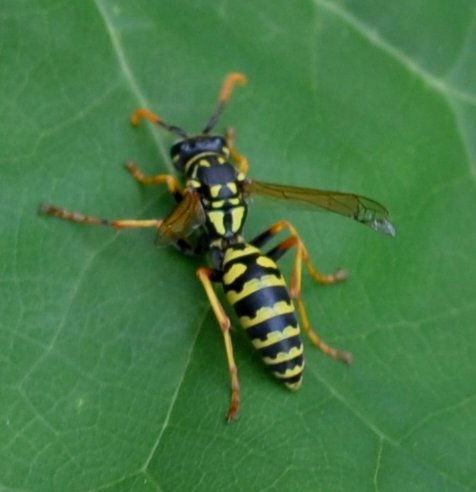
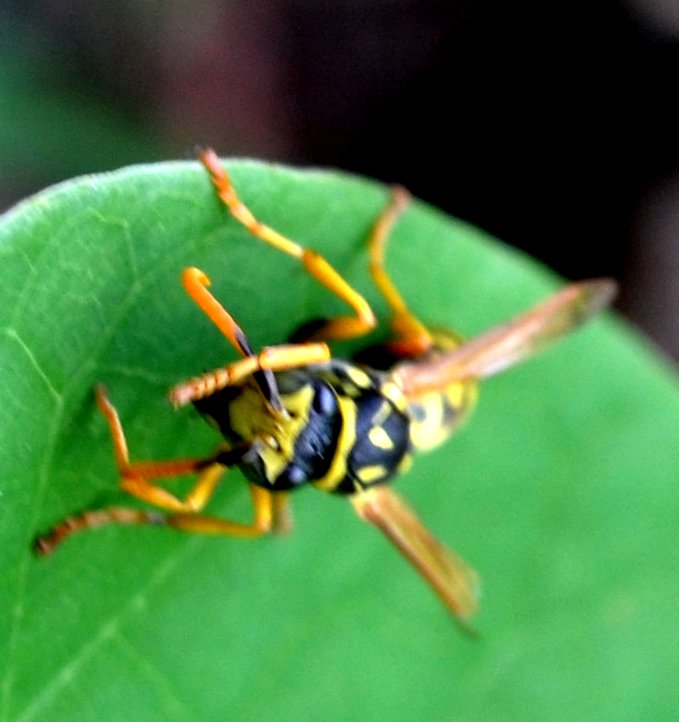

Here's the current size of the wasp nest in the attic in the AC. It is now roughly twice the size of last year's discarded nest..

Let's just sit here in the shade of the umbrella and look at the pond. It has cleared up a lot since I got all those submerged pond plants. The ones that float on the top that aren't lilies are water lettuces. The roots of all these plants collect floating particles and help the water look clearer. But the huge roots of the water lettuces are also a safe place for any tiny baby fish that hatch in the pond. So far, I haven't seen any baby fish, but there still may be some in there. I wish you were actually sitting out there with me. But maybe some day soon! You're all welcome!
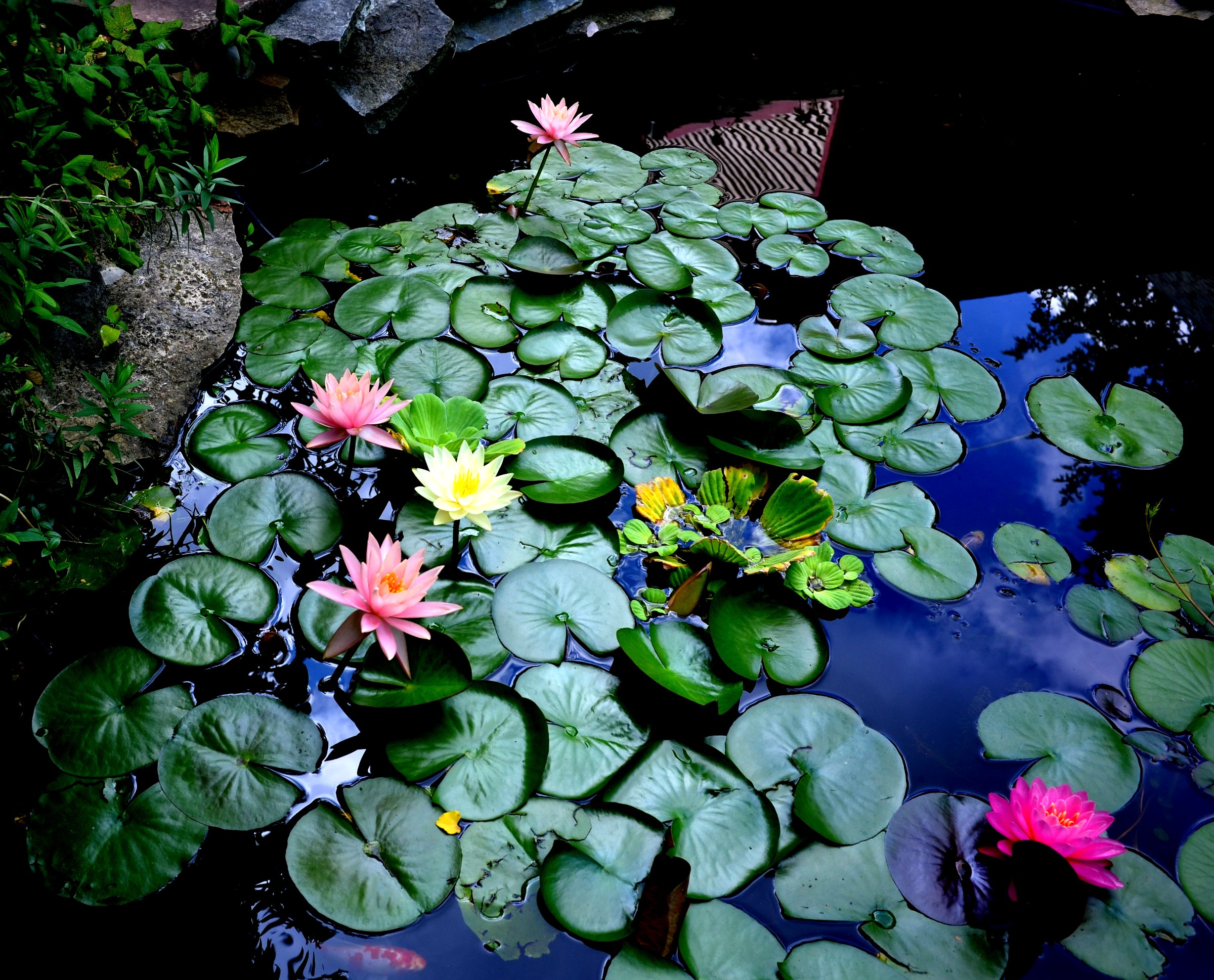
Back to July 31
On to August 14
Back to 2016 menu
Back to main menu
copyright Martha O'Kennon 2016









, very long first antennomere. Possibly Genus Otiorhynchus 8 3 16 1a.jpg)
 6 21 15 2ab.jpg)

























































